|
Keyboard Shortcuts
Keyboard shortcuts allow you to use one or two keys with another key to perform various tasks. The most commonly used key for this is the control key (ctrl). There are two of them on the keyboard and they perform the same function. The most commonly used shortcuts are ctrl-c and ctrl-v. These are the copy and paste commands. If you look at the image below, you can see the shortcuts next to the functions in the edit menu. These vary from one piece of software to another but some are almost universally the same (like ctrl-c and ctrl-v). Like the shift key, the ctrl and alt keys do nothing on their own. They must be used with other keys. There is also a 'Windows' button. That will be covered also on this page.
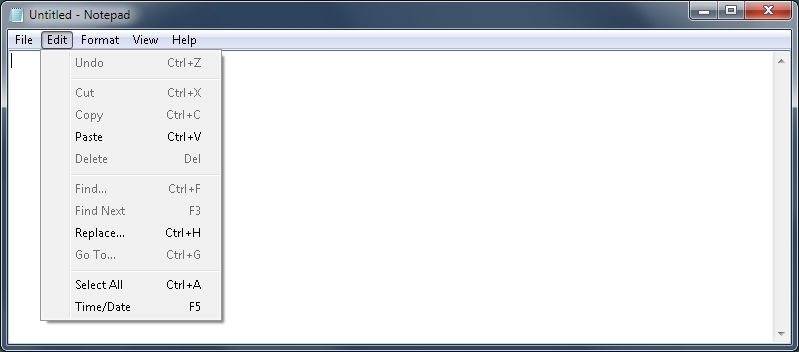
In the following photo, look at the control key. You can see that there is an asterisk under the text label. Now notice the other keys that have the asterisk then a function. You press and hold the control key and when you press the second button (of those marked) it performs a function.
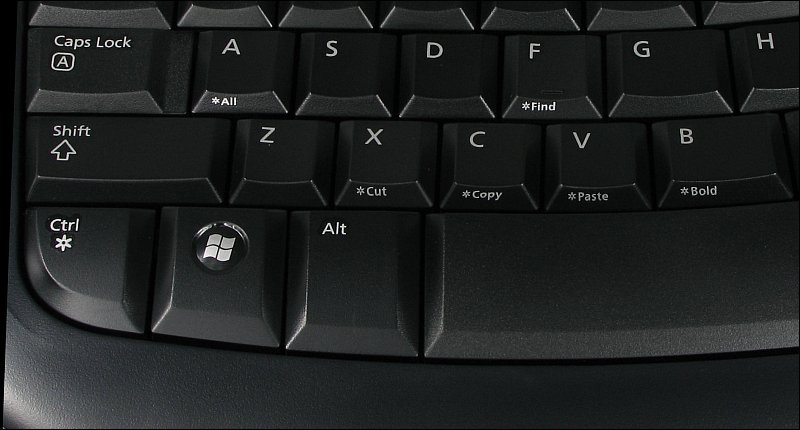
The Notepad program is very simple (read limited) so there aren't many shortcuts. To see how many shortcuts other programs have, click the various navigation items (file, edit, help...) at the top of the window. When the menu drops down you will see the shortcuts. Do this now in the browser window that you are using to view this page.
A list of common shortcuts:
CTRL-C:
If you highlight the needed text and use the ctrl-c (holding down the control key and pressing the c key) or the copy command from the edit menu, the selected text will be copied to the windows 'clipboard'.
CTRL-A:
Ctrl-a is the 'select all' command. It will select all text within the active text area (where the cursor is blinking). To make an area the active area, simply left click your mouse in the desired text area.
CTRL-V:
If you click in a text box (email, internet address, text editor...), ctrl-v (the 'paste' command) will paste the contents of the clipboard into the text area. The combination of ctrl-c and ctrl-v will make sure that you don't make any mistakes when entering text.
CTRL-X:
Ctrl-x will also copy the selected text to the windows clipboard but it will (where possible) remove the selected text from the text area.
CTRL-S:
Ctrl-s will, on most applications, save a document.
CTRL-R:
In most browsers, ctrl-r will reload or refresh the page.
CTRL-Z:
Ctrl-z will (in many programs) undo, the last action. If you delete something and decide that you didn't really want to delete it, ctrl-z will generally undo what you've done. Some programs only allow you to undo a single operation where others allow multiple undo operations. Read the owner's manual or help file of the software before you rely on ctrl-z to undo more than one operation.
CTRL-Y:
Ctrl-y operates much like ctrl-z but it redoes a command or operation that was undone. Sometimes it will redo a command multiple times but that function is even more rare than multiple undo. This command can vary from quite a bit in different software. Check the software's manual for more info.
PRTSCN:
The 'PrtScn' button on your keyboard will take a snapshot of whatever is displayed on your monitor. This image will be placed on the Windows clipboard (it will be temporarily stored). If you use a program like Irfan View or Microsoft Paint, you can paste the image and save it or crop (remove the unnecessary areas) it and save it onto your hard drive.
ALT-PRTSCN:
Alt-PrtScn does essentially the same thing as the previous shortcut but it only captures the top/active window. If you have several windows open, the top-most window will be captured.
Note:
Some people prefer to use the Snipping Tool in Win7 instead of Alt-prtscn. Either will work but alt-prtscn makes a cleaner selection with less effort.
CTRL-F and CTRL-H:
Most of the shortcuts perform the tasks immediately but some like control-f and control-h require input. Control-f is 'find'. It brings up a dialog box and allows you to enter a word or string of text. Control-h is replace. It allows you to enter a word or string of text to find and then the text that you want replaced.
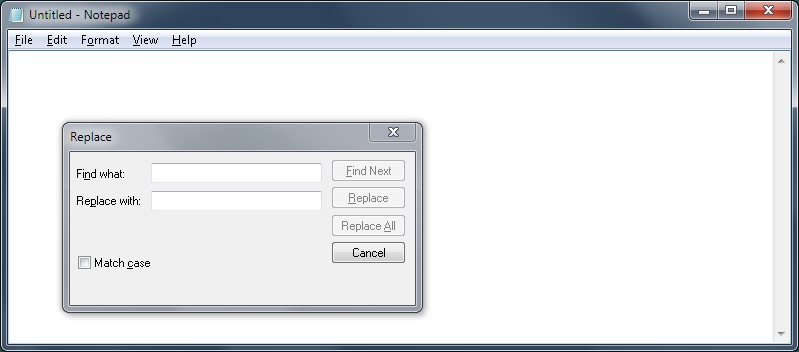
If you want to practice a few of the commands, open Notepad now. In Win7, it's pinned to the start menu (see example below). In XP, you'll likely have to go to the accessories folder (START >> ACCESSORIES >> select Notepad). Highlight and ctrl-c (copy) the highlighted text. Then paste it into Notepad (either EDIT >> PASTE or ctrl-v). Then use ctrl-h to replace one word. For example, replace ctrl with monkey. Of course, this is useless but you can see how it works. Similar functions will save you a lot of time in other applications.
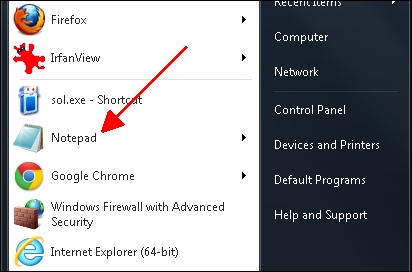
CTRL-Shift-ESC:
This will open the Task Manager.
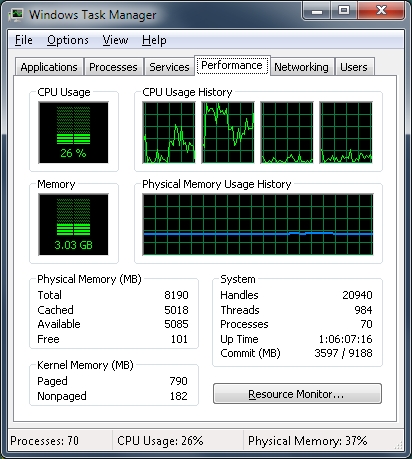
The Windows Logo Key
The Windows key has a similar function to the control or alt keys but there are some differences. For example, you can press and release the ctrl and alt keys and nothing happens. If you press and release the Windows key, the start menu will open. If you hold the Windows key down and press various shortcut keys, other functions will be performed.
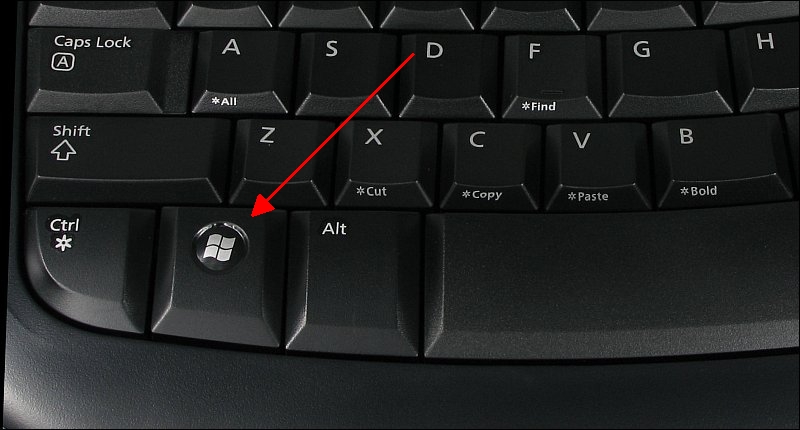
The following are a few of the Windows key shortcuts. There are others but I find these the most useful.
WK-E:
This opens the Windows Explorer (My Computer for XP users).
WK-D:
This toggles 'show desktop'.
WK-F:
This will open a search window to allow you to search your computer.
WK-Up-Arrow:
This maximizes the current (top) window.
WK-Down Arrow:
This restores the top window to it's default size (not maximized, not minimized to the taskbar).
WK-F1:
The F1 function key is almost universally used to open the help function for any open application. Using the Windows Key with the F1 key opens the Windows help dialog box, no matter what program window is open and maximized.
WK-M:
This will minimize all windows but unlike WK-D, it will not toggle the windows.
WK-ALT-Enter:
This will open the Windows Media Center.
WK-Pause:
This will open the System Properties dialog box where you can get to many of the functions including the device manager.
WK-CTRL-Tab:
This one is definitely the most interesting (that I've found). If you have multiple windows open and want to sort through them, you can use this set of keystrokes. It will display all windows. You can scroll through them with the mouse wheel, the tab button or the arrow keys. To select one, click it with your mouse or hit the enter key when it's the top (right-most) window. To return to the original display without making a selection, hit the escape key.
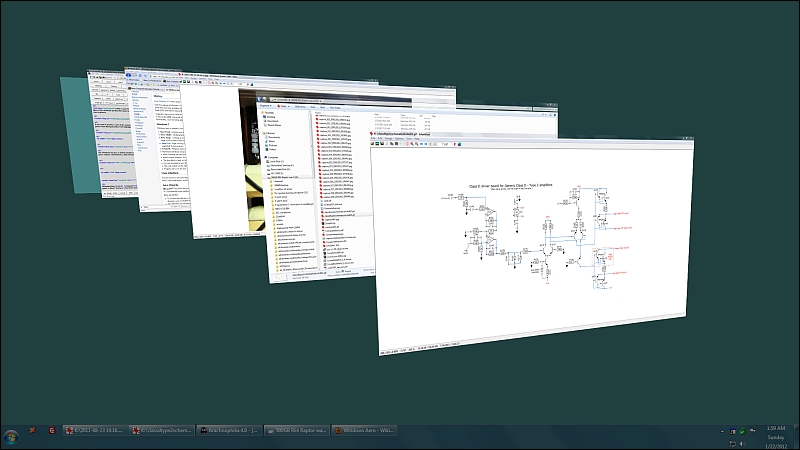
Netiquette
Netiqutte (internet etiquette) is something you should observe when visiting some sites. If you're posting a message to a respectful site, person or forum, you should use the proper etiquette. Of course, if you're on a site that resembles the wild west in manners, there's really no point, is there? Below is a list of the most common offenses.
Typing in CAPITAL Letters:
Some people (mostly newbies) have a tendency to type in all capital letters. On the net, using all capital letters is SHOUTING. Besides being hard to read, it is VERY annoying. If you're looking for help on the net and have to email or post a question, type the message with proper capitalization, grammar and spelling. If you're asking well educated people for help, they will appreciate the extra time you take to make the message easy to understand.
Newsgroups and Pictures:
Most newsgroups do not accept pictures. If you send an image to a newsgroup that doesn't have 'binaries' in its name, ask before posting the image. If you post an image to a non-binary newsgroup, your image may be deleted, your message may be deleted and/or you'll probably receive no help. This is considered to be a serious offense and is considered to be extremely rude. If you want to know what the newsgroup allows, read its charter. This is a link to a newsgroup charter search. Click here for other newsgroup resources.
Email Attachments:
An attachment is any file that's sent out with your email. Small sig files and other text files will generally be no problem for recipients. If you're going to send an image or other large file, ask the recipient if it's OK. Even if they don't tell you that it bothers them, most people will get ticked-off if you continue to send files that cause excessive download times. If you want to distribute images, upload the image to a server and send them a link to the image. It's very easy to do and it allows them to download the image at their leisure. Most people who have internet access, have server space allotted to them by their ISP (Internet Service Provider).
Subject Message:
When posting a message to a newsgroup or forum, include informative text in the subject text area. If you just say help something similarly vague, many otherwise helpful people will completely avoid the post. If they're going to help people, they don't want to have to read every post to determine which questions to which they'll try to respond.
HTML or Plain Text Messages:
If you're sending email or posting messages, send them in plain text unless you know that the group or person can or wants to receive HTML messages. A simple message like 'Hello, How are you doing?' will look like the following code to people and groups that aren't prepared to receive HTML posts. As you can see, without the highlighted text, it would be very difficult to understand the message. You should also realize that the total amount of data for the HTML version is more than 17 times the plain text version for this example (25 bytes vs 440 bytes). Posting in plain text, where possible, will reduce bandwidth usage and free up internet resources for everyone. This is especially important for usenet and mailing lists (where your message will be sent to tens of thousands of computers and servers).
<HTML>
<HEAD>
<TITLE></TITLE>
</HEAD>
<BODY BGCOLOR="#FFFFFF">
<P><FONT FACE="Arial" COLOR="Green"><B>Hello,</B></FONT></P>
<P><FONT FACE="AvantGarde Md BT" COLOR="Teal" SIZE="4"><I>How are you doing?</I><B></B></FONT></P>
</BODY>
</HTML>
--------------------------------------------------------------------------------
Miscellaneous
Extended ASCII Characters:
If you ever wondered how people produce some of those strange characters in their messages, well... Some of them are extended ASCII characters. They are produced by holding down the 'alt' key, typing a zero, then the appropriate 3 digit code and then releasing the alt key. Nothing will show up until the alt key is released. The following codes and characters are a partial list of the extended ASCII characters.
| 129 |
|
154 |
š |
179 |
³ |
204 |
Ì |
230 |
æ |
| 130 |
‚ |
155 |
› |
180 |
´ |
205 |
Í |
231 |
ç |
| 131 |
ƒ |
156 |
œ |
181 |
µ |
206 |
Î |
232 |
è |
| 132 |
„ |
157 |
|
182 |
¶ |
207 |
Ï |
233 |
é |
| 133 |
… |
158 |
|
183 |
· |
208 |
Ð |
234 |
ê |
| 134 |
† |
159 |
Ÿ |
184 |
¸ |
209 |
Ñ |
235 |
ë |
| 135 |
‡ |
160 |
|
185 |
¹ |
210 |
Ò |
236 |
ì |
| 136 |
ˆ |
161 |
¡ |
186 |
º |
211 |
Ó |
237 |
í |
| 137 |
‰ |
162 |
¢ |
187 |
» |
212 |
Ô |
238 |
î |
| 138 |
Š |
163 |
£ |
188 |
¼ |
213 |
Õ |
239 |
ï |
| 139 |
‹ |
164 |
¤ |
189 |
½ |
214 |
Ö |
240 |
ð |
| 140 |
Π|
165 |
¥ |
190 |
¾ |
216 |
Ø |
241 |
ñ |
| 141 |
|
166 |
| |
191 |
|
217 |
Ù |
242 |
ò |
| 142 |
|
167 |
§ |
192 |
À |
218 |
Ú |
243 |
ó |
| 143 |
|
168 |
¨ |
193 |
Á |
219 |
Û |
244 |
ô |
| 144 |
|
169 |
© |
194 |
 |
220 |
Ü |
245 |
õ |
| 145 |
‘ |
170 |
ª |
195 |
à |
221 |
Ý |
246 |
ö |
| 146 |
’ |
171 |
« |
196 |
Ä |
222 |
Þ |
248 |
ø |
| 147 |
“ |
172 |
¬ |
197 |
Å |
223 |
ß |
249 |
ù |
| 148 |
” |
173 |
|
198 |
Æ |
224 |
à |
250 |
ú |
| 149 |
• |
174 |
® |
199 |
Ç |
225 |
á |
251 |
û |
| 150 |
– |
175 |
¯ |
200 |
È |
226 |
â |
252 |
ü |
| 151 |
— |
176 |
° |
201 |
É |
227 |
ã |
253 |
ý |
| 152 |
˜ |
177 |
± |
202 |
Ê |
228 |
ä |
254 |
þ |
| 153 |
™ |
178 |
² |
203 |
Ë |
229 |
å |
|
|
--------------------------------------------------------------------------------
Acronyms
LOL:
Laughing Out Loud
ROTFLMAO:
:
Rolling On The Floor Laughing My @$$ Off (censored)
BRB:
Be Right Back (~I'll be right back)
BTW:
By The Way
IIRC:
If I Recall Correctly
TTFN:
Ta Ta For Now
AFAIK:
As Far As I Know
IMHO:
In My Humble Opinion
TIA:
Thanks In Advance
FWIW:
For What It's Worth
IOW:
In Other Words
FAQ:
Frequently Asked Questions
FYI:
For Your Information
WYSIWYG:
What You see Is What You Get It refers to software packages that produce output that is precisely what you see on your monitor. Ex. Some web page design packages produce a final output that is the same as what's on your monitor. This is very different from the code generated by the software that's responsible for the WYSIWYG input.
<g>:
grin- generally indicates the message was cute or humorous
--------------------------------------------------------------------------------
Internet Terms
Flame:
If you ask a stupid question you will get 'flamed'. IOW, everyone will let you know that what you did or said was less than desirable.
Newbie:
Someone that's new to a group (newsgroup) or the like.
Troll:
Someone that purposely posts messages that will result in many flame type responses. IOW, someone trying to start trouble in a group.
|






